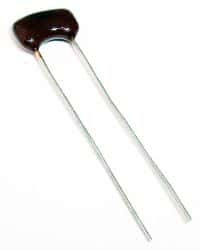The electronics industry uses various types of capacitors in its circuits. These capacitors provide different capabilities and functionality depending on the type and construction. One of the most prevalent types of capacitors is the MLCC or multilayer ceramic capacitor.
Most MLCCs are applicable to circuits that require small-value capacitance. They are preferably useful as filters, in op-amp circuits, and bypass capacitors. This is because MLCC offers small parasitic inductance as compared to aluminum electrolytic capacitors. Therefore, MLCC offers better stability over temperature, subject to their temperature coefficient.
MLCC is available in three categories or classes. The Class I type of ceramic capacitors offer low losses and high stability in resonant circuits. Although they do not require aging corrections, their volumetric efficiency is low. Class II and Class III offer high volumetric efficiency, but their stability is not as good as that of Class I capacitors. Once outside the referee time of the manufacturer, Class II and Class III capacitors may require aging corrections. Manufacturers specify the referee time during which the capacitor will remain within the tolerance range.
Alternating layers of dielectric ceramic and metallic electrodes make up an MLCC. This structure makes them physically small but does not provide them with volumetric efficiency. Design engineers selecting MLCC for electronic applications look for two important parameters—voltage rating and temperature coefficient.
The voltage rating of the MLCC indicates the maximum safe voltage the circuit can apply across the capacitor terminals. For enhanced reliability, designers use a capacitor with a voltage rating higher than it will experience in the circuit. One advantage over electrolytic capacitors is that MLCCs are non-polarized. Therefore, it is possible to connect MLCC in any position without damage.
The temperature coefficient of an MLCC depends on its Class category. If the capacitor contains Class I ceramic material, it will have a very low-temperature coefficient, which means, a change in temperature will minimally affect the capacitance. Class I MLCC also tends to have low dielectric constants, which means the material offers very small capacitance per volume. For instance, C0G and NP0 type Class I MLCC feature a 0 temperature coefficient with a tolerance of ±30 ppm.
Class II MLCC, although less stable over temperature, contains ceramic material with a higher dielectric constant. That means Class II MLCC can have more capacitance in the same volume compared to that of Class I. Class II MLCC are available in X, Y, and Z temperature coefficients. For instance, X7R is a common Class II MLCC, and can operate within a temperature range of -55 °C and +125 °C with a tolerance of ±15%. X5R MLCC can operate within a temperature range of -55 °C and +85 °C with a tolerance of ±15%. Y5V MLCC can operate within a temperature range of -30 °C and +85 °C with a tolerance of +22/-82%. MLCCs with wider temperature ranges are also available with the higher stability of temperature characteristics. However, these capacitors tend to cost more.
Engineers use several capacitors with various values in parallel or series for providing the requisite impedance over a wide range of frequencies.


